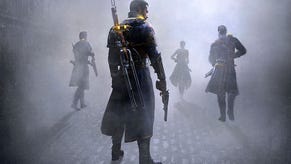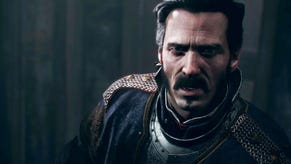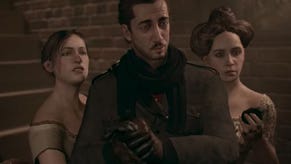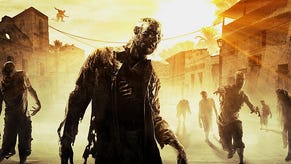The Order: 1886 Review: On the Limitations of Window Dressing
Its engrossing setting can't hide the fact that this gorgeous PS4 exclusive consists primarily of bits borrowed from other, more daring games.
This article first appeared on USgamer, a partner publication of VG247. Some content, such as this article, has been migrated to VG247 for posterity after USgamer's closure - but it has not been edited or further vetted by the VG247 team.
The Order: 1886, developer Ready at Dawn's first-ever original console creation, comes by its M rating honestly. It features all the coarse language you'd expect from today's big-budget video games (however anachronistic it may be), along with plenty of the industry's near-pornographic enthusiasm for gruesome neck-stabbing and fatal choking... as you might well expect from a studio that has made its name developing God of War spinoffs.
But the ESRB descriptors that flash across the screen at the outset of the game also make mention of "nudity." Ah, I thought to myself when I began my review, nudity in a game set in Victorian London — I bet that means there's a brothel scene. And, sure enough, three chapters into the story, the protagonist and his squad of historical gunslingers blunder through a whorehouse, bursting in on a topless prostitute cheerfully pleasuring her john.
I mention this not out of some feminist rage or puritanical desire to play gaming's moral guardian. Rather, I point it out because it embodies the general predictability of the game as a whole. If you've spent any time with a major video game release over the past seven or eight years, you can basically sleepwalk your way through both the story and mechanics of Sony's latest exclusive. The whole thing seems to have been assembled from cut-up fragments of dozens of other recent works, from Dishonored to Gears of War. At no point during The Order's 10-hour running time did it do anything unexpected or new.
The bordello, for example, has become a popular go-to for M-rated period pieces set in Victorian London or its analogues. First Dishonored, then last year's Thief, now The Order. Likewise, there are several instances of full-frontal male nudity on display in The Order, something that's become safe territory for M-rated video games since Grand Theft Auto IV: The Lost and the Damned. Likewise the up-close, blood-soaked melee kills, the growled obscenities, the grotesque demi-human transformations. The Order: 1886 bravely dares to tread where others have paved the way.
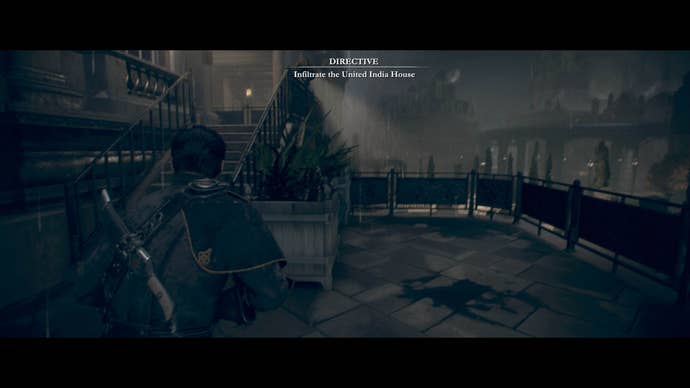
I'm inclined to see this less as a failing of this particular game than as a symptom of the games industry as a whole. The Order actually does have a few original thoughts in its proverbial head, and it feels like Ready at Dawn burned through its allowance of breakout concepts on the setting and premise of the story. This is a very nice-looking game, which means it was a very expensive game, and its being tied down as a single-platform exclusive greatly limits its potential audience. No doubt Ready at Dawn had to play it safe, sticking to proven game concepts and edgy-but-demonstrably-uncontroversial contents. The result is a very solid and reasonably entertaining work that fails to demonstrate the mold-breaking potential it demonstrated in that first teaser Sony showed off back at E3 2013.
So let's talk about what The Order does right: Namely, its setting. While its 19th Century London backdrop would seem to echo the aforementioned Dishonored and Thief, this London is the real thing rather than a mere stand-in. The game's emphasis on an ancient order of knights and historical personages like Nicola Tesla would suggest inspiration from Assassin's Creed, but The Order makes no effort to present itself as a clandestine tale of the real world; it's full-on alternate history. With advanced sci-fi weapons, airship sentries, and radio communicators in a world of brass fixtures and gas lamps, it hearkens more toward sci-fi novels like William Gibson's The Difference Engine or Neal Stephenson's The Diamond Age than it does your typical blockbuster video game. This setting, as well as the fact that many of its world's inner workings (like the ageless war between werewolves and Arthurian knights sustained by the water of the Holy Grail) are left largely to the player's imagination, goes a long way toward keeping things interesting.
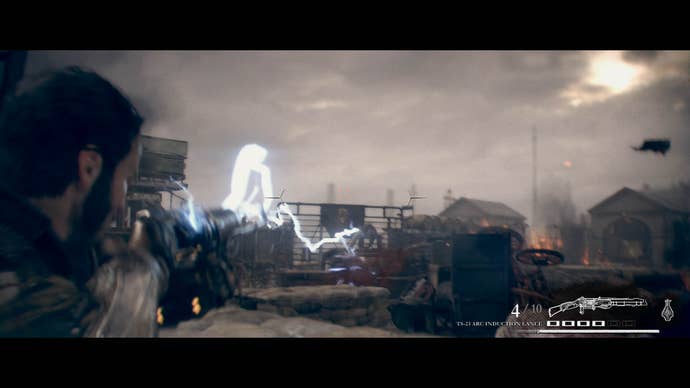
The narrative that unfolds against this backdrop is rather less inspired, if only because it's manacled by genre tropes. The protagonist is a good guy whose morals are shaken as he's drawn into a completely predictable web of intrigue and conspiracy that goes all the way to the top; you've seen this story dozens of times already, and The Order offers no new twists on the old standards. Heck, the lead villain actually says, "We're not so different, you and I" (those exact words!) during his monologue before the final battle, followed by a mournful Roy Batty-esque soliloquy upon his defeat.
The game mechanics themselves feel every bit as rote as the dialogue, if not more so. Despite the story unfolding in Victorian London, The Order plays out as a cover-based shooter akin to Gears of War (though lacking anything so defining as that series' active reloading or curb-stomping). You can carry one type of pistol and one type of long gun at a time, along with smoke and fragmentation grenades, and you can collect more ammo and swap weapons dropped by foes on the fly. Yet only the magnesium rifle (which allows you to fire a cloud of powdered magnesium at a target, which you then set alight with a flare) stands apart from the weapon choices offered by a hundred other shooters. Otherwise, the only thing separating this shooter from countless others is the dim grey patina of 19th Century London.
Would it surprise you to hear that The Order makes heavy use of quick-time events? In fact, the game's two major boss battles play out entirely as QTEs. But those button prompts appear frequently throughout the adventure's running time, haphazardly inserted into cutscenes to create an illusion of interactivity. And make no mistake, The Order features plenty of cutscenes; it is essentially a lengthy movie expanded into a video game.
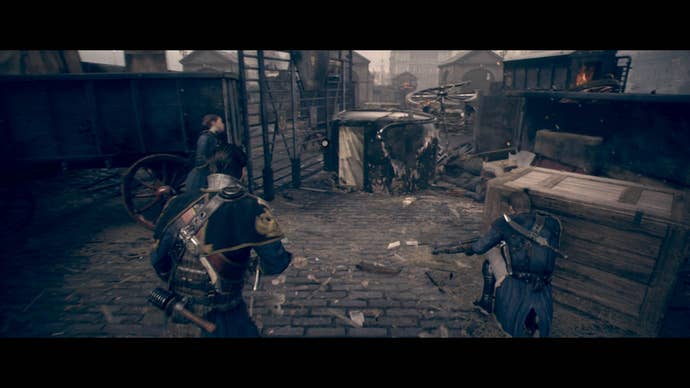
It's this compulsory narrative that ultimately diminishes the game. The Order is so closely tied to its story that it never really offers the player any room to breathe. It's as linear an experience as any Call of Duty, lacking the intriguing puzzle rooms of RAD's God of War games or even the big, open battlefields of other cover-based shooters. Most environments feature a few small rooms or shallow dead-ends to obscure the fact that your hulking protagonist is slogging through big, empty rectangular boxes for most of the adventure. The environments aren't even consistent in their interactivity; Galahad bumps into invisible boundaries a foot away from most furniture, but every once in a while there'll be a table or vase or something you can knock into. It feels very haphazard.
Similarly, the game constantly undermines its own sense of tension by visibly segregating combat and non-combat sequences. Any anxiety you're meant to feel while skulking through abandoned subway tunnels or hospital wards turned charnel houses evaporates when Galahad conspicuously puts away his weapons and refuses to draw them. If nothing else, The Order (with its emphasis on supernatural creatures) could have created a convincing survival horror vibe if it didn't so carefully demarcate its safe spaces; instead, you plod dutifully from one room of waist-high barriers to the next. It could have been a decent police procedural, too, if RAD had developed the mechanic that allows Galahad to pick up and investigate clues; but since there's no way to go but forward, these trinkets amount to little more than Trophy fodder.
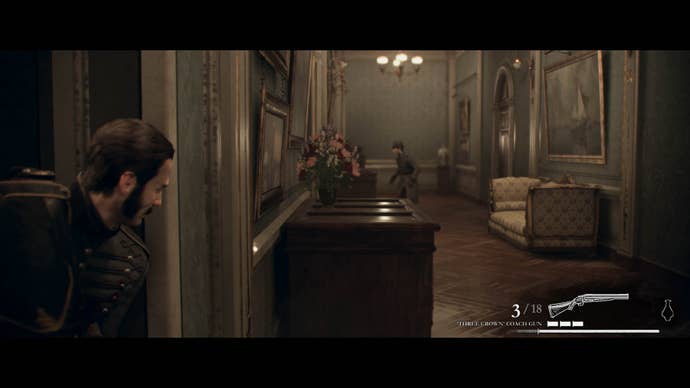
There's been much debate about The Order's supposed length, though the Internet's claims of its brevity have been rather exaggerated; my first time through the campaign on normal difficulty ran roughly 10-11 hours. That's hardly a failing in and of itself; some of the greatest games I've ever played were shorter than that. I completed Super Metroid in about six hours my first time through, and Metal Gear Solid in about 10. Unfortunately, The Order doesn't exactly stand toe-to-toe with those classics. As the credits rolled, I couldn't shake a sense of, "Is that it?" — not in terms of volume, but regarding the ideas and mechanics it presented. I actually think The Order is just right in terms of length, given it's content; it manages to put all its play concepts through their paces without feeling padded or drawn out. I didn't need another QTE battle, another bit where I help a woman push a wagon aside to create a makeshift platform, or another shooting sequence where werewolves take turns rushing at me while I roll aside and gun them down.
The Order seems like a tough sell, not because it's bad or short, but because there's so little to it beyond the clearly defined path to the ending. It offers only a single collectible and no opportunity to deviate from the main plot or employ any personal agency — this, despite the fact that the protagonist's motives and actions in the face of a conspiracy sit at the heart of the game. Without a little breathing room, without a little space for player determination, without something to find or explore beyond the meticulously scripted plot, there's little reason to revisit The Order unless you just really enjoy its too-predictable storyline.
Still, there's something beneath it all that works. For all its derivative nature, The Order: 1886 falls well short of classic status; yet the premise here could definitely serve as the groundwork for a more creative, more substantial series. It's one of the most convincing steampunk/alternate history worlds video games have offered up. Now Ready at Dawn just needs to bring the script and mechanics up to that same standard.
VisualsThe Order's uniform grey color scheme is as last-gen as its play mechanics, but the world looks great, with some impressive character animation. If only those characters' interactions with the world around them were half as convincing.
SoundIt's there, it does the trick. A little more diegetic sound — dialogue, music, street noise — would have gone a long way toward selling the setting.
InterfaceEntirely too scripted and QTE-driven, but at least the role of buttons offer conceptual consistency between action and cutscenes.
Lasting AppealPoor. Finish The Order once and you've seen all The Order has to offer.
ConclusionThe Order: 1886 ends by leaving itself wide open for a sequel (The Order: 1887, one presumes), and I'm interested enough in the series' premise that I'll definitely give it a look. But I can only hope that inevitable sequel offers the sort of improvement we saw from Assassin's Creed to Assassin's Creed II. There's a decent game here, but it does little to set itself apart from those that clearly inspired it. Here's to the future, and to differentiation.

